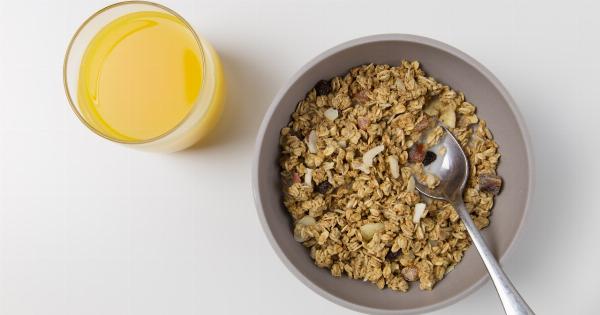Diabetes is a chronic disease that affects millions of people worldwide. It is characterized by high levels of glucose in the blood due to the body’s inability to produce or use insulin effectively.
While genetics and lifestyle factors play a significant role in the development of diabetes, recent research suggests that the timing of our meals, particularly lunch, can also impact the likelihood of developing this condition.
The importance of meal timing
Our bodies operate on a circadian rhythm, a natural internal process that regulates various bodily functions, including metabolism and blood sugar control.
Disruptions in this rhythm, such as irregular eating patterns, can have detrimental effects on our health.
The role of lunch in blood sugar control
Lunch is a crucial meal of the day as it provides the necessary energy to sustain us throughout the afternoon. The composition and timing of our lunch can influence our blood sugar levels and insulin response.
Several studies have shown that consuming a balanced meal with a mix of carbohydrates, proteins, and fats can help regulate blood glucose levels and prevent spikes or crashes.
Effects of a delayed lunch
In today’s fast-paced world, it is not uncommon for individuals to skip or delay their lunch due to work or other commitments.
However, research suggests that this habit can have negative consequences, especially for individuals at risk of diabetes. A study published in the American Journal of Clinical Nutrition found that delaying lunch for more than five hours after waking up can lead to higher postprandial blood sugar levels and a reduced insulin response.
Importance of lunch break duration
Aside from the timing of lunch, the duration of the lunch break also plays a role in diabetes likelihood.
A study conducted by the European Society of Cardiology found that individuals who took shorter lunch breaks, typically less than 30 minutes, had a higher risk of developing metabolic syndrome, a cluster of conditions that includes high blood sugar, high blood pressure, and obesity.
Additionally, shorter lunch breaks often result in rushed meals, leading to poor dietary choices. People may opt for fast food or processed snacks that are high in refined carbohydrates, unhealthy fats, and added sugars.
These foods can cause rapid spikes in blood sugar levels and contribute to insulin resistance.
Tips for a healthy lunch routine
Developing a healthy lunch routine can help lower the risk of developing diabetes and promote overall well-being. Here are some tips to consider:.
1. Prioritize your lunch break
Make it a priority to take a dedicated lunch break away from your desk or workspace. Use this time to relax, unwind, and focus on your meal.
2. Plan and prepare your meals
Preparing your lunch ahead of time allows you to have more control over your food choices. Pack a balanced meal that includes vegetables, lean proteins, whole grains, and healthy fats.
3. Avoid skipping meals
Skipping meals, especially lunch, can disrupt your blood sugar levels. Make sure to eat regularly throughout the day to maintain stable energy levels and prevent overeating later on.
4. Opt for whole, unprocessed foods
Choose whole foods over processed options whenever possible. Whole foods, such as fruits, vegetables, nuts, and seeds, provide essential nutrients and are less likely to cause spikes in blood sugar levels.
5. Control portion sizes
Pay attention to portion sizes to prevent overeating. Use smaller plates or containers, and aim to fill half of your plate with vegetables, one-quarter with lean protein, and one-quarter with whole grains.
6. Mindful eating
Eat mindfully, savoring each bite and paying attention to your body’s hunger and fullness cues. Avoid distractions such as screens or work-related tasks while eating to fully appreciate your meal.
7. Stay hydrated
Drinking enough water throughout the day is essential for overall health. Stay hydrated by keeping a water bottle nearby and avoid sugary drinks that can contribute to blood sugar imbalances.
The bigger picture
While lunch hours and meal timing can impact the likelihood of developing diabetes, it’s important to note that they are just one piece of a larger puzzle.
Genetics, overall diet, physical activity levels, and other lifestyle factors all contribute to the risk of developing this chronic condition.
Individuals should strive to maintain a well-rounded and healthy lifestyle that includes regular exercise, stress management, and a balanced diet.
Consulting with healthcare professionals can also provide personalized guidance and support in managing diabetes risk factors.






























